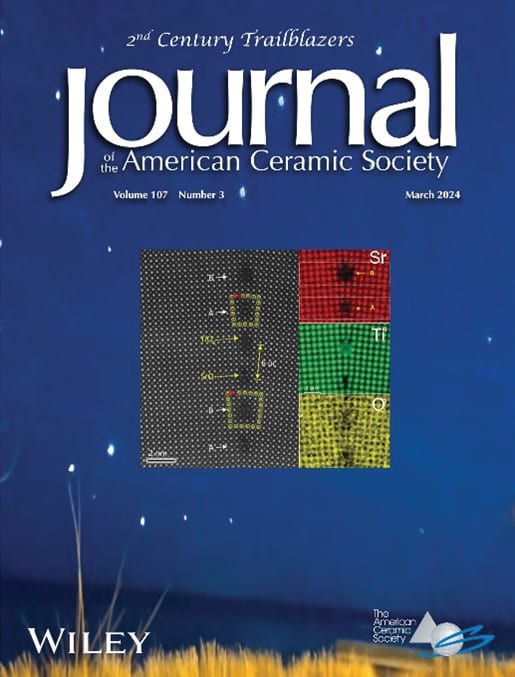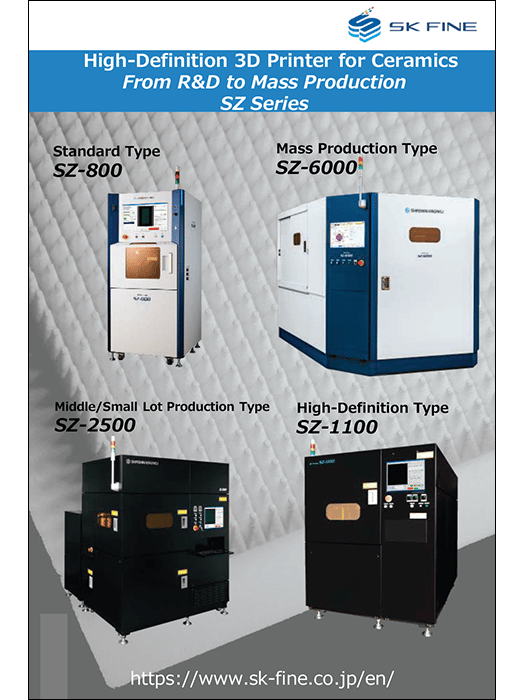journal highlights
Jonathon Foreman
ACerS journals managing editor
Early career research in ceramics and glass
There are many commendable early career researchers who are positively impacting the ceramics and glass community, yet their efforts often go unrecognized. To celebrate our younger members and their accomplishments, Journal of the American Ceramic Society launched the 2nd Century Trailblazers initiative in 2023.
The 2nd Century Trailblazers initiative aimed to elevate the work of researchers who received their Ph.D. degrees within the past 10 years by inviting select authors to submit manuscripts to JACerS. The initiative culminated in the JACerS March 2024 issue (Figure 1), which solely contains papers submitted through the initiative. View the whole issue.
Of the articles in this issue, JACerS editor-in-chief John Mauro recognized the paper by Xufei Fang, “Mechanical tailoring of dislocations in ceramics at room temperature: A perspective,” as the best contribution. Fang presented this paper at ACerS Annual Meeting at MS&T in October 2023, and he is now leading the effort to organize a JACerS special issue on the topic of dislocations in ceramics.
Researchers interested in submitting their manuscript for this special issue can contact ACerS journals managing editor Jonathon Foreman for further information.

Figure 1. Cover of the March 2024 JACerS special issue featuring 2nd Century Trailblazers.
Credit: ACerS
Many 2nd Century Trailblazer authors have contributed other articles to the ACerS journals prior to and since that special issue. Papers by these authors and others have been assembled into a new Topical Collection, “Early career research in ceramics and glass,” which is roughly organized based on the topics of dislocations, defects and crystal structures, processing, and ceramics designed and evaluated for specific applications.
Among the articles in the first section is “Dislocation loop evolution in Kr-irradiated ThO2.” As the article’s name suggests, the authors describe their observations of the changes that occur with increasing dosing of krypton ions. They use molecular dynamics to explore the mechanisms and kinetics of the observed changes to the structural defects.
In the second section, the rapid communication “Synthesis of high entropy monoboride (Mo0.25W0.25Cr0.25Ta0.25)B powders with abundant twins from oxides” explores low-cost fabrication methods for high-entropy ceramics. This class of materials has garnered much interest because the strained crystal structure in these materials, which is caused by the very different sizes of constituent atoms, results in unique properties. Twinned high-entropy borides, the focus of the rapid communication paper, have the potential to be extremely hard.
The use of artificial intelligence is growing, and early career researchers are embracing ethical application methods, including modeling and simulations. In the third section, the authors of the article “Artificial Intelligence-based determination of fracture toughness and bending strength of silicon nitride ceramics” trained and tested a convolutional neural network model with the goal of predicting fracture toughness and bending strength directly from microstructure images. Their results demonstrated relatively high AI-determination accuracy, considering the use of various kinds of sintering additives and the wide range of relative densities.
Glass and ceramic materials have the potential to address specific unmet societal needs, for example, real-time measurement of radiation exposure. People who work near X-rays and nuclear sources often wear personal dosimeters, which passively measure accumulated dosing via a radiation sensitive film. The films are usually processed outside the workplace after the dose is accumulated, so they lack real-time information.
In the fourth section, the authors of “Gallosilicate glass and fiber for radiation detection” synthesized a material that, much like the films of dosimeters, changes color when exposed to ultraviolet, X-ray, and gamma radiation. The color change can be reversed by heat treating the material. They demonstrated the material’s potential to be used for real-time monitoring, which holds great promise to eventually replace dosimeters as personal radiation detectors.
To see the full lineup of articles in the Topical Collection “Early career research in ceramics and glass,” go to ACerS Publication Central. Click on the “Collections” menu and select “Topical Collections” from the drop down. You will see this collection along with others created over the past few years. You can also directly access this collection.
Further reading: Glass problem solutions in Ceramic Transactions
The Ceramic Transactions book series contains talks from the Glass Problems Conference. At this annual conference, organized by the Glass Manufacturing Industry Council, researchers focus on practical problems encountered in industrial settings and their approaches to resolving them.
View and purchase books in the Ceramic Transactions series. ACerS members can receive a 35% discount on physical copies by using the code CERAM at checkout.
xx
About the author:
Doug Thurman is past president (2022–2023) of AACCM and president of Sunrock Ceramics Company (Broadview, Ill.). Contact Thurman at dthurman@sunrockceramics.com.
In memory of Jeffery Brundage, AACCM president
Jeffery (Jeff) Brundage, current president of AACCM as of January 2024, died peacefully early in the morning of Feb. 10, 2024, at the age of 71. He was a member of AACCM since its inception and long-time ACerS member.
Brundage supported the ceramics industry in past positions with ILC Space Systems (Clearlake, Texas); General Ceramics National Beryllia Division, now American Beryllia Inc. (Haskel, N.J.); and Superior Technical Ceramics (St. Albans, Vt.). He started his own business, Critical Services LLC (Swanton, Vt.), and served as CEO of Lamda Advanced Materials LLC (Alfred, N.Y.) at the time of his death.
Brundage made many dear friends during his 40 years solving challenges within the ceramics industry. He will be deeply missed.
